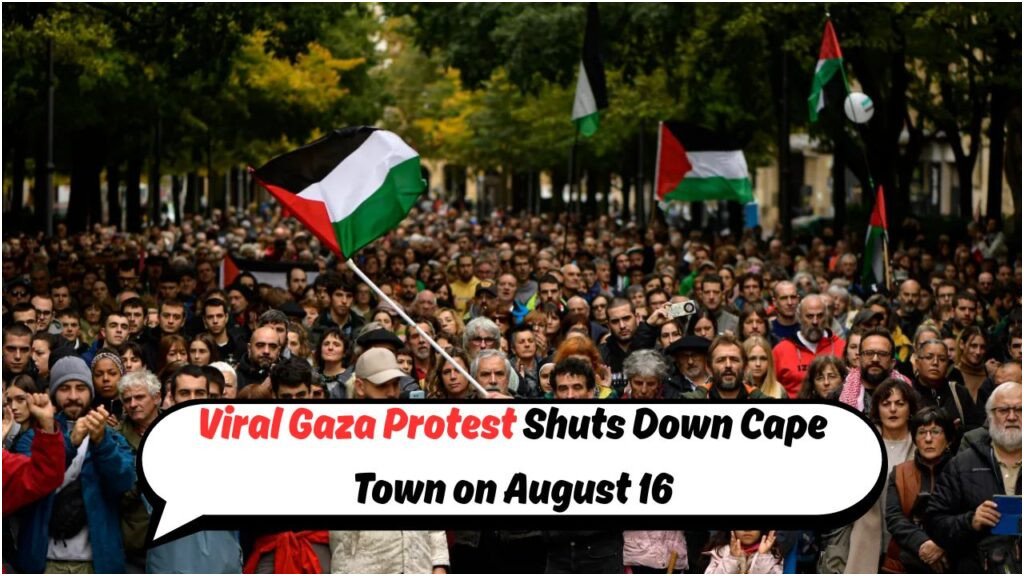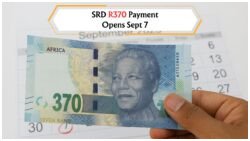Gaza Protest Ignites Cape Town’s Viral Pots and Pans Uprising: On August 16, the bustling streets of Cape Town were brought to a standstill as residents joined in a unique protest, echoing sounds of clanging pots and pans. This symbolic demonstration, rooted in solidarity with Gaza, saw participants of all ages gathering to voice their sentiments against global injustices. The uprising, which quickly gained momentum on social media, became a testament to the power of unified, peaceful protest. With roads paralyzed, the movement highlighted how local actions can amplify international causes, rallying a community in support of freedom and justice.
Impact of the Pots and Pans Protest on Cape Town’s Roads
The pots and pans protest in Cape Town on August 16 was more than just an expression of solidarity; it was a vivid display of how collective community action can disrupt urban life. As the protest unfolded, major roads in the city were temporarily inaccessible, causing significant delays and traffic diversions. Commuters found themselves either joining in the protest or rerouting their journeys to avoid the congested areas. Such movements underscore the potency of peaceful protest in drawing attention to issues that might otherwise be overlooked.
- Voicing dissent through non-violent means.
- Creating a visible impact on the local infrastructure.
- Engaging diverse demographics in civic action.
- Amplifying global issues to a local audience.
- Fostering a sense of community solidarity.
- Encouraging dialogue on international matters.
- Promoting peaceful protest methodologies.
- Highlighting the city’s role in global activism.
The Significance of August 16 in Cape Town’s Protest History
August 16 will be remembered as a pivotal day in Cape Town’s protest history, marking a moment where local voices joined a global conversation. The protest was not just about making noise but about making a statement—a call for justice and human rights. Participants saw this as an opportunity to reflect on South Africa’s own struggles with inequality and the fight for freedom. The historical significance of this day lies in its ability to unite different generations under a common cause, fostering an environment of awareness and empathy.
| Event | Date | Location | Impact | Participants |
|---|---|---|---|---|
| Pots and Pans Protest | August 16 | Cape Town | Road Paralyzation | Thousands |
| Global Awareness Day | August 16 | Worldwide | International Solidarity | Millions |
| Local Civic Engagement | August 16 | Cape Town | Community Unity | Hundreds |
| Peaceful Protest | August 16 | Cape Town | Non-Violent Expression | Various Ages |
How Social Media Amplified the Pots and Pans Uprising
Social media played a crucial role in the spread and success of the pots and pans protest in Cape Town. Platforms like Twitter, Facebook, and Instagram buzzed with photos, videos, and personal stories, turning a local event into a global phenomenon. Hashtags related to the protest trended, attracting international attention and support. This digital amplification not only helped spread the message faster than traditional media but also encouraged more people to participate, both physically and virtually, thereby enhancing the protest’s reach and impact.
 SASSA Child Grant: R560 Payments Set for August 22, 2025 – Ensure Your Bank Details Are Up-to-Date!
SASSA Child Grant: R560 Payments Set for August 22, 2025 – Ensure Your Bank Details Are Up-to-Date!
Community Reactions to the Pots and Pans Protest
- Increased awareness of global issues.
- Heightened sense of community empowerment.
- Critiques on the effectiveness of non-violent protests.
- Discussions on the role of social media in activism.
- Concerns about disruption to daily life.
- Support for continued peaceful demonstrations.
- Reflections on historical protest movements.
- Calls for governmental attention to international issues.
The Symbolism Behind Pots and Pans in Protests
Using pots and pans in protests carries a deep symbolism, representing the noise of the unheard and the struggle of the common people. This method of protest has roots in various global movements where citizens have used everyday objects to make their voices heard. In Cape Town, this symbol resonated with the community, transforming ordinary utensils into powerful tools of expression. The act of banging pots and pans not only drew attention due to its unique audibility but also unified participants through a shared, accessible action.
Lessons Learned from the Cape Town Uprising
The August 16 protest in Cape Town serves as a reminder of the strength found in unity and the power of peaceful demonstration. It highlighted the potential for everyday individuals to drive change, encouraging communities to stand together for causes that matter. Moving forward, the lessons learned from this protest could inspire similar actions, advocating for justice and equality both locally and globally.
Future Implications of the Pots and Pans Protest
- Potential for increased civic engagement.
- Encouragement of non-violent protest methods.
- Inspiration for global solidarity movements.
- Greater reliance on social media for activism.
- Heightened government awareness of public sentiment.
- Continuation of dialogues on human rights issues.
- Strengthened community bonds.
- Promotion of peaceful resistance techniques.
How the Protest Influenced South African Civic Movements
The protest’s influence extended beyond the immediate event, sparking discussions and actions within broader South African civic movements. It demonstrated the effectiveness of peaceful protests in capturing public interest and pushing for social change. As a result, other community groups may adopt similar strategies, leveraging the power of unity and peaceful expression to advocate for their causes.
 NSFAS R5,200 Allowance Deposits Begin September 8, 2025 – Ensure Your Bank Details Are Correct
NSFAS R5,200 Allowance Deposits Begin September 8, 2025 – Ensure Your Bank Details Are Correct
FAQ Section
What was the purpose of the pots and pans protest in Cape Town?
The protest aimed to show solidarity with Gaza and highlight global injustices through peaceful means.
How did the protest affect Cape Town on August 16?
The protest paralyzed roads, caused traffic diversions, and brought significant attention to the cause.
Why is using pots and pans significant in protests?
Pots and pans symbolize the noise of the unheard, making them powerful tools for peaceful protest.
How did social media contribute to the protest?
Social media amplified the protest, reaching a global audience and encouraging participation.
What are the future implications of this protest?
It may inspire more civic engagement, peaceful protests, and global solidarity movements.




